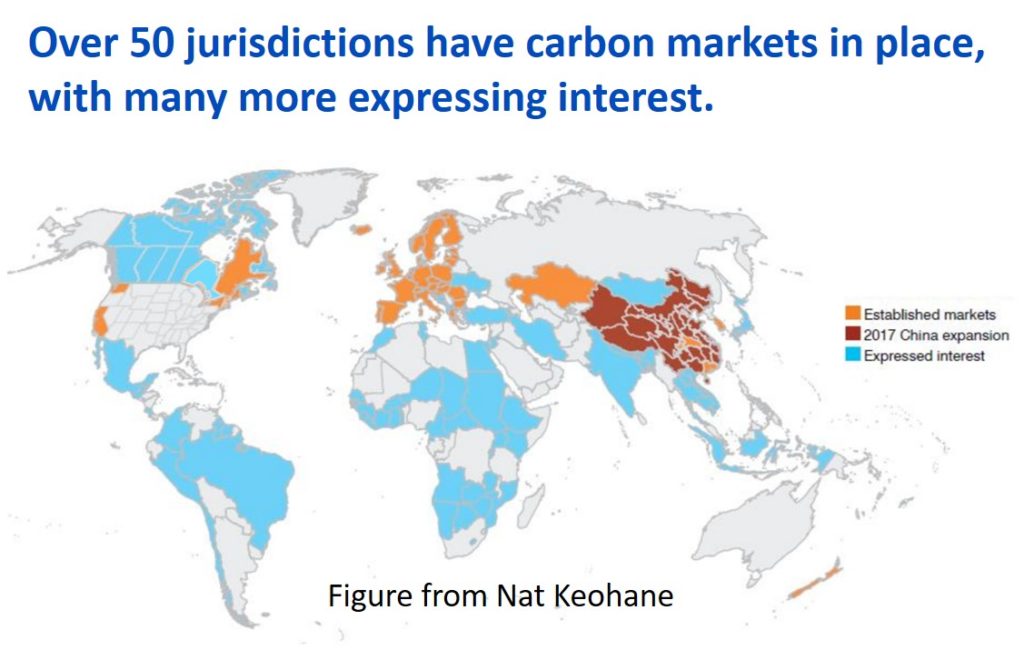Cap and Trade
Following the Kyoto Protocol, Energy Trading Systems (ETS) — also called cap and trade — emerged as the primary method to put a price on carbon. The first was in the European Union, launched in 2005. As of 2019 there is a form of Energy Trading System in over 50 jurisdictions, with more being developed.
In cap and trade, a cap of carbon emissions is set by the government on various parts of the economy, such as power plants, manufacturing, and transportation. The cap is based on previous emissions and declines over time. Each emitter must have permits sufficient for their emissions. These permits — or “allowances” — are sold at auction by the government. If a company does not have sufficient permits for their emissions, they can buy permits on the open market from those who have more permits than they need. Thus the emissions levels are set by the government, and the eventual price is set by the market. Emissions are monitored and tracked by the Environmental Protection Agency in the U.S. and local equivalents, as well as by industries themselves.
For more on how cap ant trade works, go to the Environmental Defense Fund site. To compare systems of cap and trade see information from the World Bank.
Additional Elements and Variations
Cap and trade systems vary in a number of ways. A principal difference is what emissions are covered. For example the California ETS covers 85% of all emissions, whereas the Regional Greenhouse Gas Initiative (RGGI) covers only power plant emissions. A second major difference is how the revenue is spent. Examples range from government expenditure of revenue, such as in California, to returning a dividend to all citizens, such as proposed by some legislation.
Allowances Each facility covered under the cap is required to surrender an allowance (permit) for each ton of CO2e emitted. The allowance “allows” emission. Typically allowances are sold by auction. Some systems allow purchase of allowances for future years in separate auctions, and some systems allow for “banking” of allowances from year to year. The price of allowances received in auctions does not indicate the success of the cap and trade system. Low prices simply mean that it is cheaper for a business to retrofit and reduce emissions rather than buy allowances. So low prices are actually good news, indicating that emission reductions are happening.
Allocations In some cases, free allowances are allocated (allocations) to specific companies or industries. This is done to prevent driving some companies out of business or to leave the jurisdiction (called leakage). These free permits or allocations are meant to decrease over time.
Offsets Also, in some cases, “offsets” are allowed. That is if a business funds a project to sequester carbon, such as planting trees, or a wide range of other methods, the emissions of that business can be “offset” and permits are not required for the amount of carbon emissions offset by sequestering.
Offsets must be carefully verified but are increasingly important. We are now at 415 ppm CO2 in the atmosphere. A “safe” level is below 350 ppm. Because CO2 remains in the atmosphere for the order of 200 years, the only way to reduce to safe levels is to pull CO2 out of the air. The best way to do that is through natural processes like forests, agriculture and natural lands. Sale of offsets provide a market driver for promoting carbon capture and sequestration through such natural processes, or through technological processes (like Direct Air Capture).
Last update May 22, 2019
